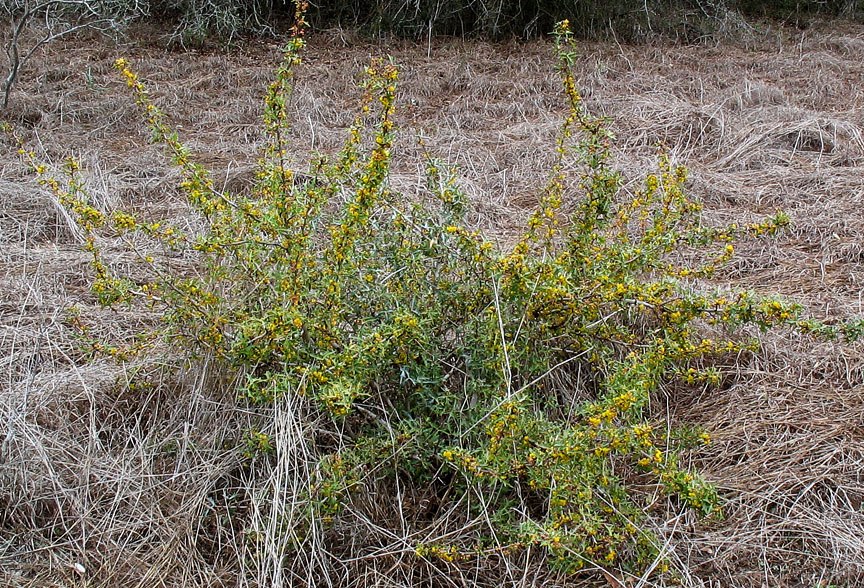Two species are native to Purola, B. trifoliolata (agarita) and B. swaseyi (Texas barberry) – endemic to the Edwards Plateau. Agarita has only 3 leaflets (thus 'trifoliate'), but B. swaseyi generally has 7 to 9 leaflets. The two species are known to hybridize; and at Purola Preserve some 50 hybrids have been identified with 5-7 leaflets, so that counting leaflets alone does not suffice to distinguish B. swaseyi from a hybrid. And a few plants with the general characterists of B. trifoliolata but with minute floral features (stamens) of B. swaseyi have also been found.
Agarita blooms very early, even in February, and in a good year the bush presents a mass of highly fragrant, brilliant yellow blossoms.

B. swaseyi blooms only slightly later - as the frost-covered blooms below demonstrate. There is a short period when both species are in flower - a window facilitating hybridization. Interestlingly, the blooming of plants identified as hybrids on morphological grounds has been shown to peak between the peak periods of the nonhybrids.
The agarita berries ripen to red by late spring, and their sweet tart flavor offers a refreshing snack. On occasion we have collected enough to make jelly, but the sharp points of the holly-like leaves make this a challenging task. [We did try the 'beat-the-bush' approach once, but avoiding damage to the brittle stems made it no more efficient than just picking directly.] Our dogs too covet the berries and stop and beg beside bearing plants - but they know not to stick their snout into the bush.
B. swaseyi berries often (but not always) have a hollow cavity surrounded by a sweet and juicy flesh. They vary considerably from plant to plant, in size, in shape, in color, in the amount of fruity flesh, and in the size and color of seeds. Of the 500 plants counted on our 50-acre tract in 2002, some 120 still had fruit in the first week of June – although many were already losing their berries.
The deer only rarely touch these plants, and even then only the most recent growth. But they too have their 'predators.' Some years virtually all the new growth is taken by a worm specializing in Berberis (both species) - tentatively linked to a pyralid moth, Omphalocera dentosa, by David Wagner of the Univ. of Connecticut. In June 2009, when many B. trifoliolata plants were attacked, I did not find the worm on any B. swaseyi bushes, even those adjacent to B. trifoliolata plants with the worm.